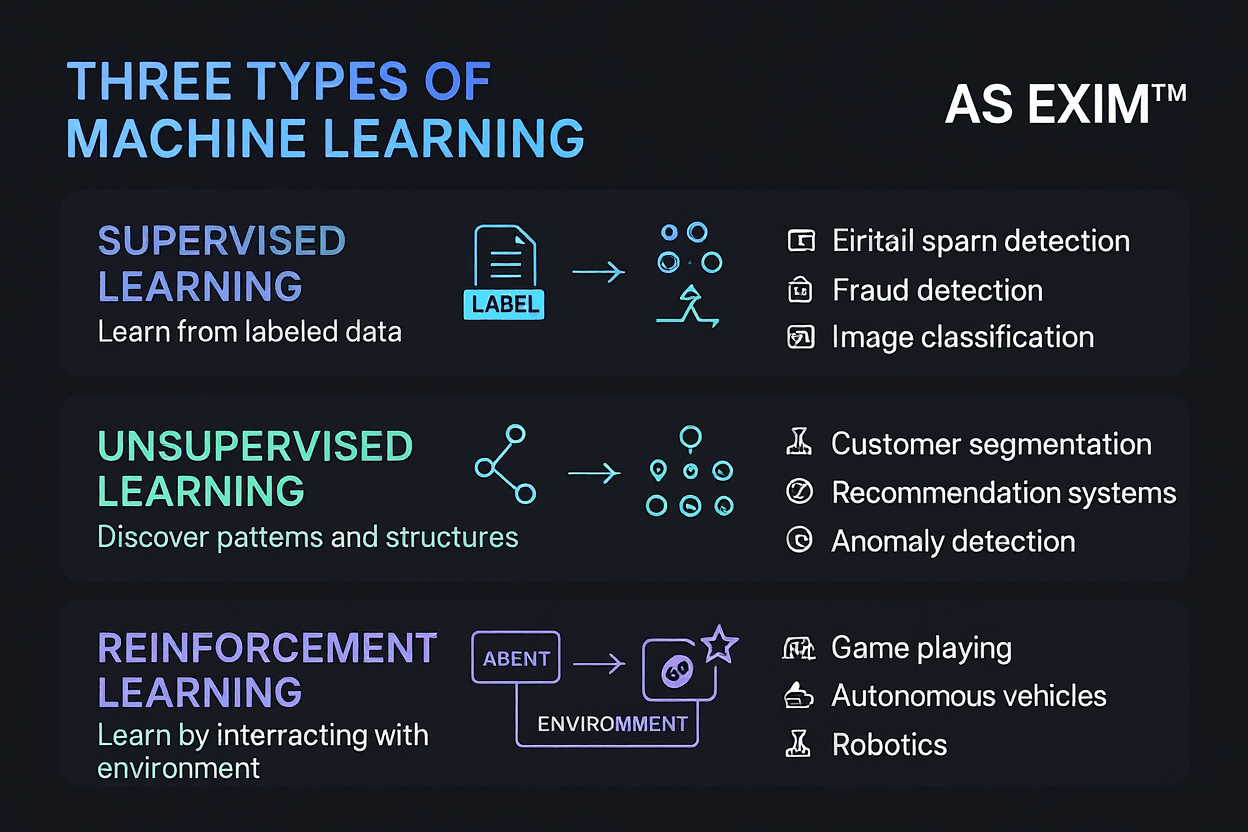
1. Supervised Learning: The Guided Learner
In Supervised Learning, models learn from a dataset that includes both input features and their corresponding correct output labels. It’s like a student learning with a teacher providing the answers. The goal is to learn a mapping from inputs to outputs so that the model can accurately predict outcomes for new, unseen data.
How Industries Use It:Italic
•Healthcare: Predicting disease outbreaks, diagnosing illnesses (e.g., identifying cancerous cells from medical images), and personalizing treatment plans based on patient data.
•Finance: Fraud detection in banking by classifying transactions as legitimate or fraudulent, credit scoring, and predicting stock prices.
•Retail: Sales forecasting, customer churn prediction, and optimizing pricing strategies.
•Marketing: Targeted advertising and lead scoring.
2. Unsupervised Learning: The Independent Explorer
Unsupervised Learning deals with unlabeled data, where the algorithm must discover hidden patterns, structures, or relationships on its own. There’s no ‘teacher’ providing correct answers; the model acts like an explorer charting new territory, finding inherent groupings or dimensions within the data.
How Industries Use It:Italic
•E-commerce: Customer segmentation (grouping customers with similar buying behaviors) for personalized marketing campaigns and product recommendation systems (e.g., “Customers who bought this also bought…”).
•Cybersecurity: Anomaly detection to identify unusual network activities or potential threats that deviate from normal patterns.
•Media & Entertainment: Content recommendation (movies, music) and organizing large datasets of images or documents into clusters.
•Genomics: Identifying patterns in DNA sequences and grouping similar genetic structures.
3. Reinforcement Learning: The Experiential Learner
Reinforcement Learning involves an agent learning to make decisions by performing actions in an environment and receiving rewards or penalties based on those actions. The agent learns through trial and error, aiming to maximize cumulative rewards over time. It’s akin to training a pet with positive reinforcement.
How Industries Use It:Italic
•Automotive: Developing self-driving cars that learn to navigate complex road conditions, avoid obstacles, and adhere to traffic rules through continuous interaction with their environment.
•Gaming: Creating AI players that can master complex games (like chess or Go) by learning optimal strategies through millions of simulations.
•Robotics: Training robots to perform intricate tasks in manufacturing, logistics, or even surgery through iterative learning and refinement of movements.
•Finance: Algorithmic trading strategies that learn to optimize investment decisions based on market feedback.
•Resource Management: Optimizing energy consumption in data centers or managing complex supply chains.
**Understanding these three core types of Machine Learning is fundamental to appreciating the vast capabilities of AI. **Bold
Each paradigm offers unique approaches to solving complex problems, driving innovation and efficiency across virtually every sector. The continuous evolution of these learning methods promises an even more intelligent and automated future.



